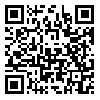Volume 60, Issue 1 (13 2002)
Tehran Univ Med J 2002, 60(1): 1-8 |
Back to browse issues page
Download citation:
BibTeX | RIS | EndNote | Medlars | ProCite | Reference Manager | RefWorks
Send citation to:



BibTeX | RIS | EndNote | Medlars | ProCite | Reference Manager | RefWorks
Send citation to:
Pourpak Z, Mansouri M, Farhoodi A. The Study Of Clinical And Laboratory Finding In Wheat Allergy. Tehran Univ Med J 2002; 60 (1) :1-8
URL: http://tumj.tums.ac.ir/article-1-1273-en.html
URL: http://tumj.tums.ac.ir/article-1-1273-en.html
Abstract: (8575 Views)
Food allergy is affecting 6-8 percent of infants. Wheat is major source of carbohydrate and protein in the people's nutrition in all worlds and also account for one of six main food allergens in children. The goal of this study is diagnosis of wheat allergic patients and description of its importance for better recognition of this disease.
Materials and Methods: Among children with different symptoms of allergy (dermatologic - Gastro intestinal and respiratory symptoms) referred to Immunology and allergy Department of Markaz Tebbi Kodakan, during one year, 35 cases was suspected to have wheat allergy. Skin prick test and IgE specific with wheat for all of them and open food challenge test with wheat for 11 patients without history of anaphylaxy) were done. The criteria for diagnosis was based on a convincing history of anaphylaxis after ingestion of wheat or the positive result in food challenge with wheat in addition to positive skin prick test ( SPT) or specific IgE ( Eliza) with wheat.
Results: In 35 suspected cases to wheat allergy, SPT in 85/1 percent, specific IgE in 90/3 percent were positive. Food challenge test were done in 11 cases and was positive in 27/2 percent of patients. 24 patients were definitely diagnosed as wheat allergic ones. Anaphylaxis was the predominant clinical feature, accounted for 87 percent of acute symptoms which were repeated for two or more episode in 91 percent of the cases with anaphylaxis. In 50 percent of patients chronic symptoms like asthma and atopic dermatitis were also observed.
Conclusion: The mean age of symptom was compatible with time of onset of complementary foods. Therefore, were proposed exclusive breastfeeding without maternal avoidance and not to be introducing wheat in infant regimen until 12 mouth of age. Anaphylaxis was occurred, repeatedly in these patients which demonstrate, in one part, severity of the reactions in our patients and in other part the probable existence of more cases with milder reactions in whom never been referred to us .
Materials and Methods: Among children with different symptoms of allergy (dermatologic - Gastro intestinal and respiratory symptoms) referred to Immunology and allergy Department of Markaz Tebbi Kodakan, during one year, 35 cases was suspected to have wheat allergy. Skin prick test and IgE specific with wheat for all of them and open food challenge test with wheat for 11 patients without history of anaphylaxy) were done. The criteria for diagnosis was based on a convincing history of anaphylaxis after ingestion of wheat or the positive result in food challenge with wheat in addition to positive skin prick test ( SPT) or specific IgE ( Eliza) with wheat.
Results: In 35 suspected cases to wheat allergy, SPT in 85/1 percent, specific IgE in 90/3 percent were positive. Food challenge test were done in 11 cases and was positive in 27/2 percent of patients. 24 patients were definitely diagnosed as wheat allergic ones. Anaphylaxis was the predominant clinical feature, accounted for 87 percent of acute symptoms which were repeated for two or more episode in 91 percent of the cases with anaphylaxis. In 50 percent of patients chronic symptoms like asthma and atopic dermatitis were also observed.
Conclusion: The mean age of symptom was compatible with time of onset of complementary foods. Therefore, were proposed exclusive breastfeeding without maternal avoidance and not to be introducing wheat in infant regimen until 12 mouth of age. Anaphylaxis was occurred, repeatedly in these patients which demonstrate, in one part, severity of the reactions in our patients and in other part the probable existence of more cases with milder reactions in whom never been referred to us .
| Rights and permissions | |
 |
This work is licensed under a Creative Commons Attribution-NonCommercial 4.0 International License. |





